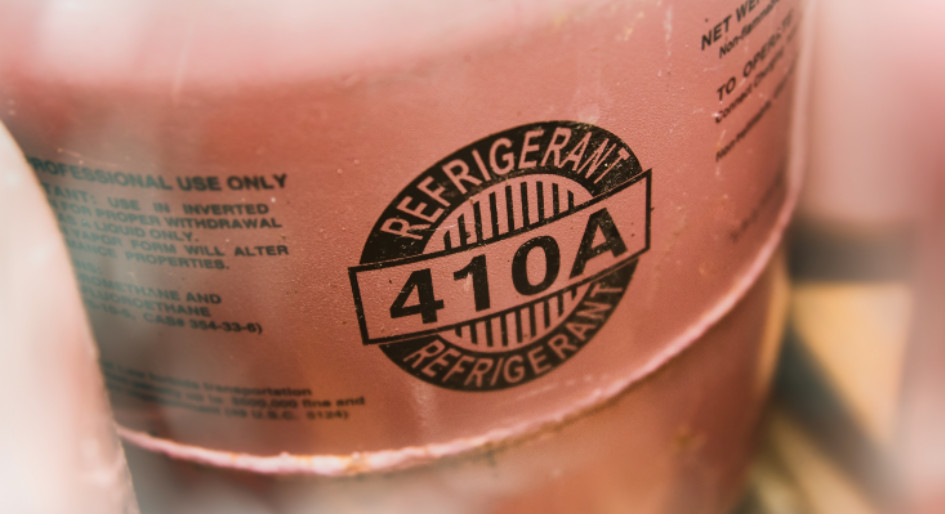New refrigerant restrictions set for 2025

An international agreement to phase out hydrofluorocarbons (HFCs) with high global warming potential (GWP) ironically poses some complications for Canadian building owners contemplating the replacement of gas-fired boilers. Industry insiders warn of market uncertainties because regulators in Canada and the United States are out of sync in banning the R-410A refrigerant that’s currently a mainstay of variable refrigerant flow (VRF) heat pump systems and Canada has been slower to provide guidance on mildly flammable, lower-GWP alternatives.
Both countries are among the 163 national signatories of the Kigali amendment to the Montreal Protocol on substances that deplete the ozone layer, which aims to curb global HFC consumption by 85 per cent relative to 2019 levels by 2036. That involves a phased reduction of the supply of high-GWP refrigerants into the market and a series of prohibitions on equipment and systems that use HFCs. Initially, Kigali amendment signatories from countries with developed economies were expected to cut the availability of new HFC refrigerants by 10 per cent, but a more significant threshold, requiring a 40 per cent reduction, kicked in for 2024.
“We’re definitely progressing well with our target,” Michel Gauvin, head of ozone layer protection programs with Environment and Climate Change Canada (ECCC) reported during a recent webinar sponsored by the Heating Refrigeration and Air Conditioning Institute (HRAI) of Canada. “The year is almost over so we’ll get the data pretty soon for 2024, the first year of the 40 per cent reduction of consumption.”
Jan. 1, 2025 also brings new, but varying restrictions on both sides of the Canada-U.S. border. Beginning next month, Canada will prohibit the manufacture or import of chillers that employ refrigerants with global warming potential (GWP) more than 750 times greater than carbon dioxide, but the schedule to address VRF heat pump systems is still imprecisely pegged for sometime between 2030 and 2036. Meanwhile, the U.S. is completely halting manufacture, import or installation of any system with capacity below 65,000 British thermal units (BTUs) that uses R-410A (which has a GWP 2,088 times greater than CO2) after Dec. 31, 2024.
There’s speculation that the new U.S. restrictions could end up applying in Canada by default since manufacturers will see little motive to maintain product lines for the smaller scale of the market here. Alternatively, there is concern that Canada could become a dumping ground for unsold U.S. inventory and/or a target market for overseas manufacturers of systems that are of questionable quality.
Also speaking during the HRAI webinar, Pushpinder Rana, a product director with Mitsubishi Canada’s HVAC division who serves as chair of the Canada Standards Association (CSA) committee for CSA B52, the mechanical refrigeration code, noted that reputable manufacturers are now largely focused on developing product lines that use lower-GWP refrigerants, which typically have an A2L classification to indicate that they are mildly flammable. At the same time, there has been an influx of largely unknown brands of heat pumps that he categorizes as “low-tier” into both the U.S. and Canadian markets.
“We have a misalignment with the U.S. and this is where we have ambiguities,” Rana asserted. “There’s a possibility that low-tier heat pumps could still come freely to Canada (until the eventual prohibition). How would it impact the market, the quality of product and reputable manufacturers that are pushing to move to A2L heat pumps?”
Gauvin acknowledged that his Ministry has been hearing similar concerns, but also pointed to what he called mostly positive feedback from the government’s consultation on the regulations for ozone depleting substances and halocarbon alternatives (known as ODSHAR) conducted earlier this year.
“We’ve received quite a few comments over the past year-and-a-half asking if and when ECCC is planning to align with the rules in the U.S. so that’s something that we’re looking into,” he said. “We’ve identified some special needs, but, generally speaking, many of the stakeholders in the refrigeration and air conditioning sector noted that transition to lower GWP refrigerants is generally progressing well with existing controls.”
With the imminent embargo on new chillers using high-GWP refrigerants, most Canadian provinces and territories have now adopted references to the most recent edition of CSA B52 into their building and fire codes, or are expected to do so within the next few months. That will allow for installations that use A2L refrigerants, including R-32 in VRF heat pump systems. Nova Scotia and New Brunswick are the two anomalies where HRAI officials aren’t sure when those code updates will occur.
There will also still be some flexibility to purchase or import chillers that do not comply with ODSHAR if Environment and Climate Change Canada deems that it serves a essential purpose for health, safety or the “good functioning of society” and there are no economically or technologically viable alternatives. That should cover chiller purchases made before Jan. 1, 2025, but not shipped into Canada by that date. However, it’s not an automatic reprieve.
“If you do have a chiller system that’s coming in, pay attention,” advised Perry Chao, HRAI’s director of regulatory affairs. “You may need to apply for an essential purpose permit through Environment and Climate Change Canada if you don’t feel like you can meet this January 1 deadline.”
The post New refrigerant restrictions set for 2025 appeared first on REMINET.

